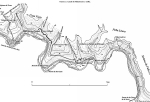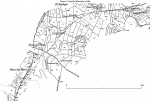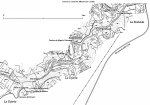








| For the photo's, see below |
| Home / the complete website |
 |
 |
 |
 |
 |
 |
 |
 |
 |
| Segment 1 | Segment 2 | Segment 3 | Segment 4 | Segment 5 | Segment 6 | Segment 7 | Segment 8 | Segment 9 |
|
Just east of Gea, along the A-1512, one can find the information center - called Centro de Interpretacion - focused on all aspects of the aqueduct,
see the museumwebsite and the one of
the province. More information by mail and telephone (0034) 978 702 100 (town hall) Opening hours (during the summer): - Tuesday - Saturday; 10 - 14 and 17 - 20h - Sunday: only 10 - 14h; Monday closed. On Saturday and Sunday also guided tours are organized at 11.00 and 13.00h. |
| Item | Info |
|---|---|
| Length | 25 km |
| Cross-section (in tunnel) | 0,8 - 1,25 m wide and 1,7 - 2,2 m high |
| Volume | 24.000 m3/day |
| Gradient | 0,2 (0,1 - 0,6) % |
| Period | unknown / 1 c CE |
| Features |
|
| Recommended literature : |
|
| Recommended websites : |
|
| How to visit : | see above |
| HOME | More literature on more aqueducts | Last modified: December, 2017 - (webmaster) |